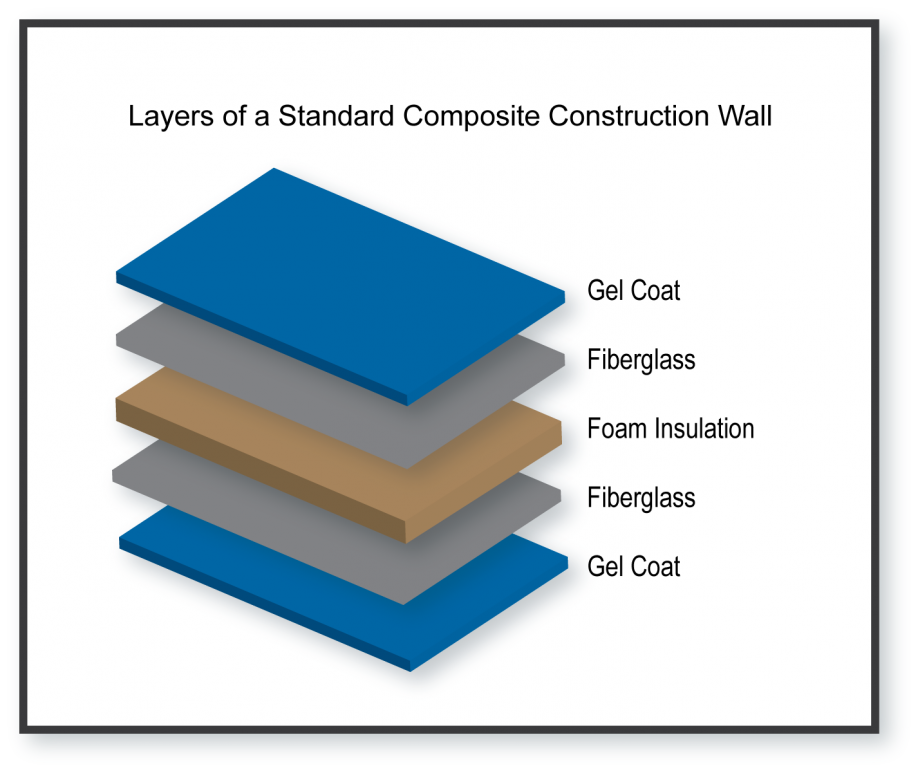Unlocking the Environmental Advantages of Recycled Compounds in Building And Construction and Design
In the world of building and style, the usage of recycled compounds holds considerable pledge for improving sustainability techniques and minimizing ecological influence (composites). By incorporating these cutting-edge materials, there is a possible to resolve crucial concerns such as waste minimization, energy preservation, and a decrease in carbon impact. The change in the direction of an extra sustainable future in these markets depends upon unlocking the full potential of recycled composites. This conversation will certainly explore the diverse advantages and difficulties connected with integrating recycled compounds into construction and layout, offering a look into the transformative possibilities that lie ahead.

Environmental Impact Decrease
The reduction of environmental influence via the usage of recycled composites in construction and design plays a crucial duty in sustainable techniques. By including recycled compounds right into building materials, the building sector can significantly decrease its carbon impact and contribute to an extra eco-friendly future. These lasting products, made from repurposed plastics, timber fibers, or other recycled components, provide a sensible choice to traditional construction materials without endangering on quality or toughness.
Recycled composites aid divert waste from landfills and minimize the need for extracting basic materials, hence conserving natural deposits. Furthermore, the manufacturing procedure of these compounds frequently eats much less power and produces fewer greenhouse gases compared to creating virgin materials (composites). This change in the direction of utilizing recycled compounds not just minimizes environmental damage however likewise advertises a round economic situation by encouraging the reuse of materials that would certainly otherwise be disposed of
Waste Minimization
With a focus on lessening waste in building and layout, the assimilation of recycled composites supplies a sustainable solution to reduce environmental impact. Waste reduction is an important facet of sustainable methods, and the usage of recycled composites presents an opportunity to accomplish this objective properly. By making use of products that have already offered their initial purpose, such as recycled plastics or recovered wood fibers, the building and style markets can considerably decrease the amount of waste produced and sent to garbage dumps.
Recycled compounds have the prospective to draw away substantial quantities of waste from standard disposal techniques, adding to a much more circular economic climate where sources are used successfully. Furthermore, the manufacturing procedure of recycled compounds frequently eats much less power and creates less discharges contrasted to virgin products, even more minimizing the environmental impact of construction and design projects.
Applying waste reduction techniques with the unification of recycled compounds not just aids in saving natural sources however likewise promotes an extra sustainable approach to building and creating for a greener future.
Power Preservation
Including recycled composites not only reduces waste in building and style but additionally plays a crucial function in improving energy preservation practices within the industry. Making use of recycled composites in building and construction can substantially add to power conservation through different ways. The manufacturing of virgin materials usually needs substantial energy inputs, whereas using recycled compounds takes in less power, consequently reducing general power consumption. In addition, incorporating recycled composites can add to far better insulation buildings in structures, minimizing the requirement for excessive home heating navigate here or air conditioning, and subsequently lowering power use for environment control. Moreover, the lightweight nature of lots of recycled composites can result in lighter frameworks, calling for much less energy for transportation and installation. By promoting using recycled composites in building and design, the sector can make considerable strides in the direction of attaining energy effectiveness and lowering its carbon impact, ultimately adding to a much more lasting developed environment.
Carbon Footprint Reduction
Enhancing sustainability methods via the use of recycled compounds in building and construction and design significantly reduces the carbon footprint of the sector. By incorporating recycled materials into the manufacturing of compounds, the requirement for virgin sources reduces, bring about lower power usage and greenhouse gas discharges connected with typical manufacturing processes. This decrease in carbon impact is crucial in combating climate change and promoting a much more eco-friendly technique to building and layout.
The carbon impact decrease attained via the adoption of recycled composites straightens with the global push in the direction of lasting techniques and the decrease of commercial discharges. Ultimately, by focusing on the assimilation of recycled compounds, the sector can make substantial strides in lowering its carbon impact and contributing to a more lasting future.
Lasting Future
The assimilation of recycled composites in building and construction and layout not just addresses instant environmental worries but additionally lays a strong structure for a lasting future in the market. By including recycled composites right into building materials and products, the construction and layout industries can dramatically decrease their reliance on virgin resources, resulting in a more round economic situation. This change in the direction of sustainability is crucial for mitigating the environmental effect of conventional building practices, which commonly cause high degrees of waste generation and resource deficiency.

Conclusion
Finally, recycled composites use significant environmental advantages in building and design by reducing environmental effect, reducing waste, conserving power, lowering carbon footprint, and promoting a lasting future. Welcoming making use of recycled compounds can add to a more environmentally-friendly approach to building and design, inevitably causing an extra lasting and greener future for all.
The decrease of environmental effect with the usage of recycled compounds in building and layout plays an essential function in lasting methods.With an emphasis on decreasing waste in construction and layout, the integration of recycled compounds uses a lasting service to lower environmental impact. visit our website By advertising the use of recycled composites in construction and style, the industry can make this link considerable strides in the direction of accomplishing power performance and decreasing its carbon footprint, inevitably contributing to a much more lasting built atmosphere.
